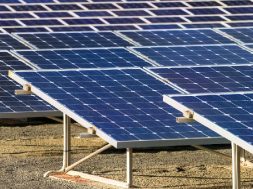
Solar Mini-Grids Can Power 490 Million People By 2030 At $0.20/KWh; Need $127 Billion Investment: World Bank – EQ Mag Pro
-
Current rate of solar mini grid deployment is not enough to achieve universal electrification goals under SDG 7, says a World Bank report
-
From $0.55 per kWh in 2018, the cost of electricity generation through this medium has come down to $0.38 per kWh and by 2030 it should further drop down to $0.20 per kWh
-
For this, the world will need to generate an investment of $127 billion to help power half a million people by 2030
Calling solar mini grids a ‘core solution’ for closing the energy access gap whose cost of electricity generation has dropped from $0.55 per kWh in 2018 to $0.38 per kWh now, a World Bank report sees these having the potential to serve 490 million people by 2030 for a cumulative cost of $127 billion.

At present, 48 million people globally are connected to 21,500 mini grids with half of being served by solar mini grids, reflecting an investment cost of $29 billion. At the current pace of planned capacity, 29,400 mini grids are planned with 99% of these in solar PV and 95% in Africa and South Asia worth $9 billion.
Over the years with falling costs of key components, introduction of digital solutions, expanding list of mini grid developers and growing economies of scale have helped accelerate the deployment of solar mini grids. These are powering life-changing electric appliances as refrigerators, welders, milling machines or e-vehicles.
However, analysts in the World Bank report Mini Grids for Half a Billion people: Market Outlook and handbook for Decision Makers, count around 733 million people with most of them in Sub-Saharan Africa as still lacking access to electricity.
The current rate of growth is not sufficient to reach universal access to electricity by 2030 under Sustainable Development Goal 7 (SDG7). For that, the world will need to have 490 million people served by mini grids with almost all being solar PV driven, for an investment worth $127 billion.
The report writers recommend 5 market drivers to accelerate the industry forward to achieve universal electrification and achieve full market potential of solar mini grids, as the following:
- Lower the unsubsidized cost of electricity generated from solar hybrid mini grids to $0.30 per kWh by 2025 and further down to $0.20 per kWh by 2030
- Deploy 2,000 mini grids per country per year with modern mini grids, up from 150 per country per year today
- Providing superior-quality service to customers and communities by providing reliable electricity for 3 million income-generating appliances and machines and 200,000 schools and clinics
- Raise $127 billion in cumulative investment from all sources, including development funding, and public and private sector funding
- Create mini grid business environments in key deficit nations through light handed and adaptive regulations, supportive policies and providing respite from bureaucratic red tape
“Now more than ever, solar mini grids are a core solution for closing the energy access gap,” said Infrastructure Vice President at the World Bank Riccardo Puliti. “To realize mini grids’ full potential to connect half a billion people by 2030, several actions are needed, such as incorporating mini grids into national electrification plans and devising financing solutions adapted to mini grid projects’ risk profiles.”


















